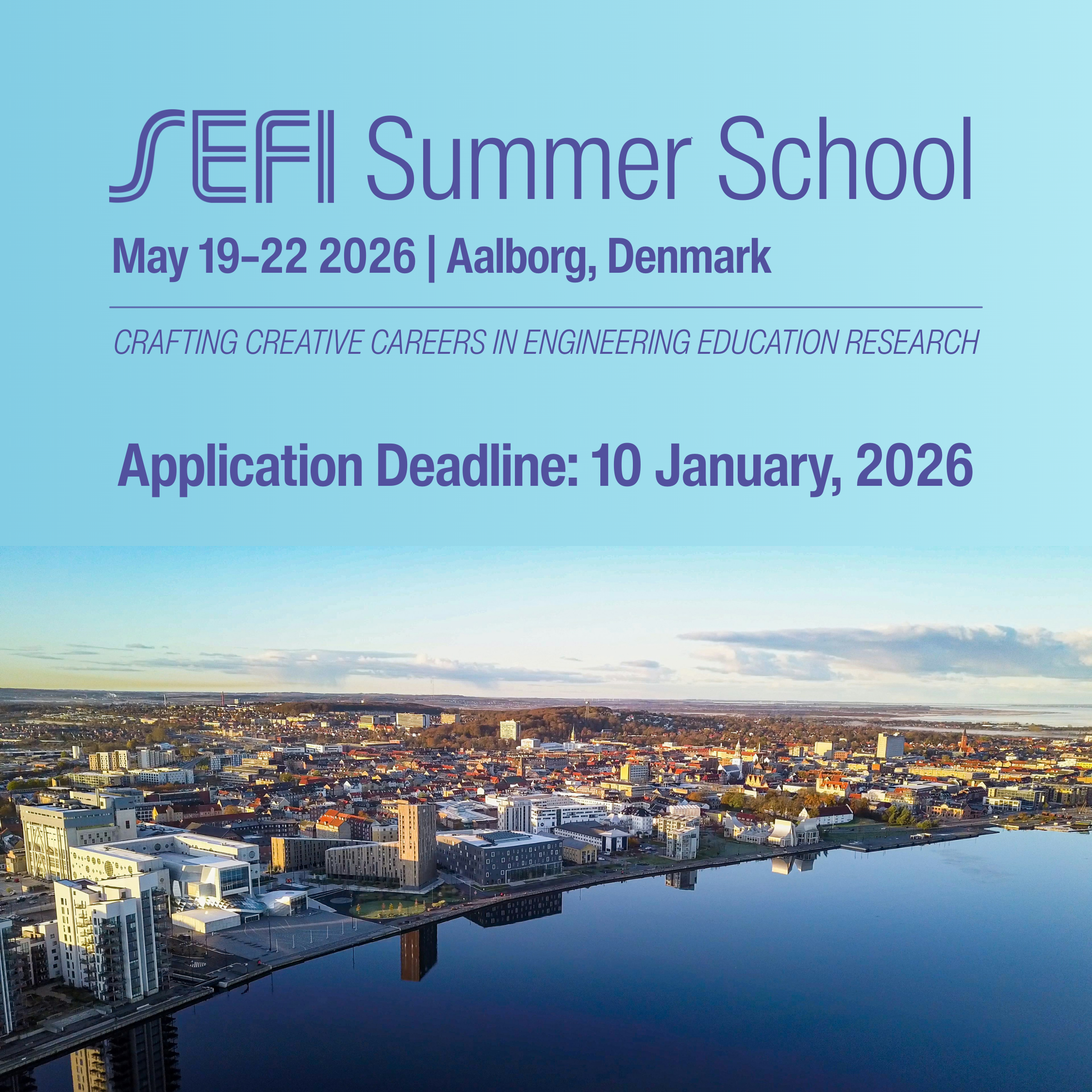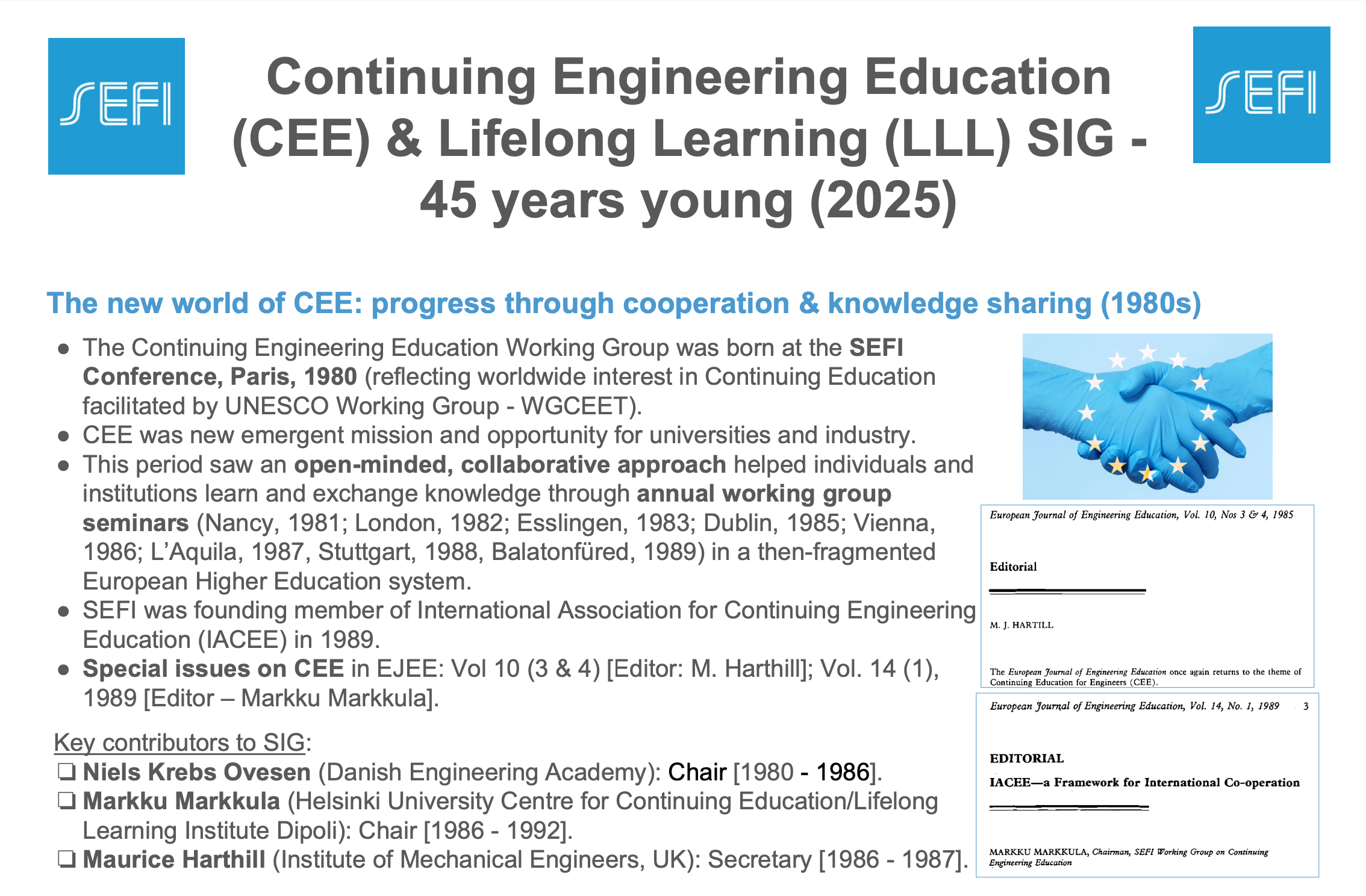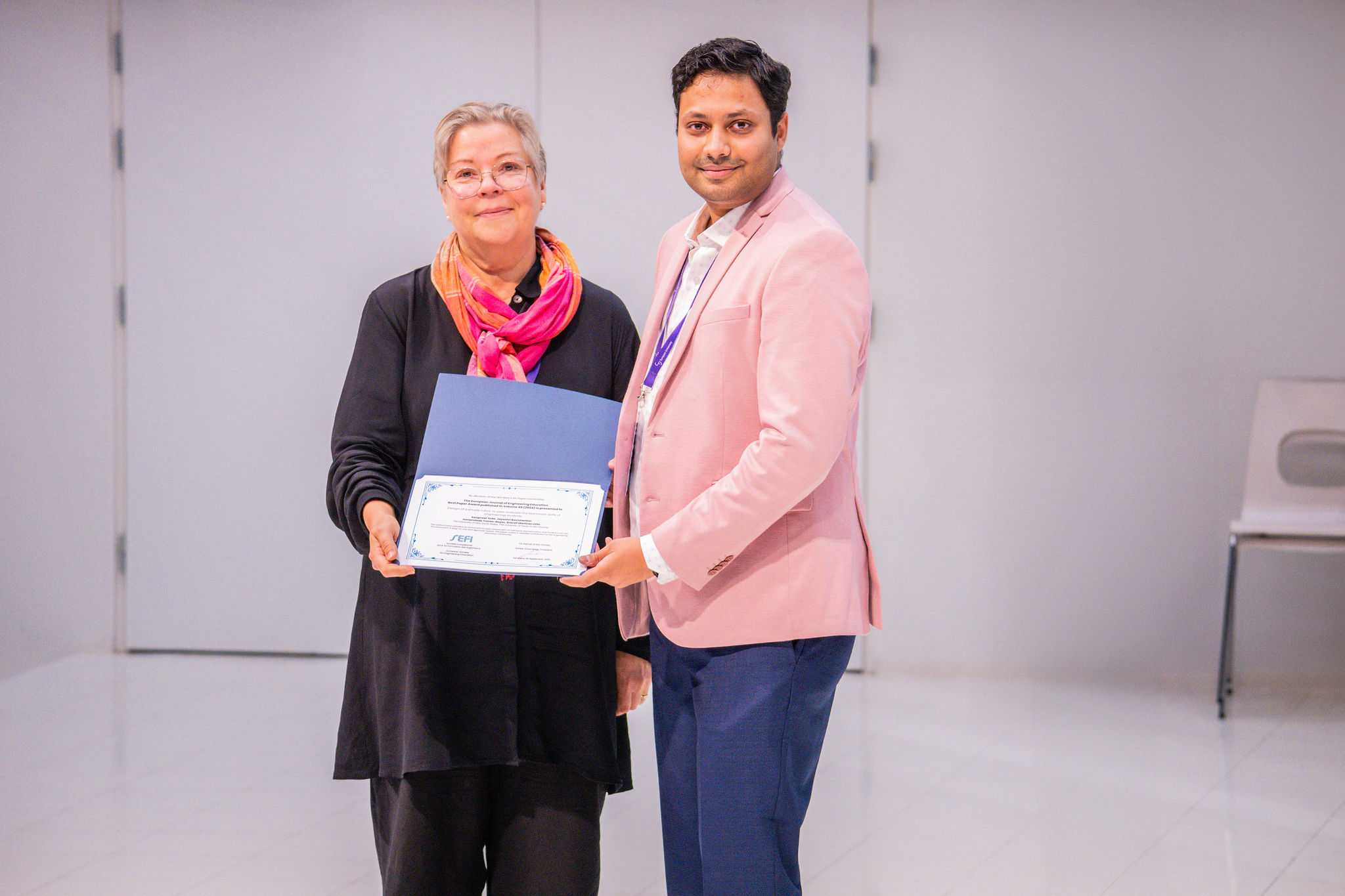Application and registration for the SEFI 2026 Summer School on Engineering Education Research is now…
Evolution of European Engineering Education Research
Bill Williams
How has engineering education research (EER) been evolving in Europe over the last decade? We in the EER Working Group (WG) would very much like to be able to provide an answer to this question, an answer based upon comprehensive empirical data. However such data has not yet been compiled at Europe-wide level.
Nevertheless, three empirical studies in which EER WG members have been involved do allow us to build a partial picture and perhaps identify areas where progress is being made. These studies characterize EER evolution in three Nordic countries, in Portugal and the UK respectively. I summarize the main findings below and references are listed for readers who would like more detail*.
Edstrom et al. (2016) looked at EER in Denmark, Finland and Sweden and concluded that:
- SEFI had an important role in creating the Nordic EER network (NNEER);
- EER in these countries is quite established;
- The number of works appearing annually in the publications analysed (EJEE and SEFI conferences) has been relatively stable.
- Finland has been the most active in presenting papers at the SEFI conference, which is important in terms of forming an EER network.
- Several initiatives have been implemented over the years. However, it has been easier to support new initiatives rather than long-term ones, which has implications for long-term activities involving networks.
When van Hattum-Janssen et al. (2015) studied the situation in Portugal they observed that:
- between 2000 and 2011 there was a steady increase in the number of articles published in international EER journals whose authors had Portuguese affiliation;
- Nine Portuguese higher education institutions have ongoing research in EER.
The main constraints identified by the authors were:
- Perception of some lack of legitimacy of the field;
- Limited funding opportunities;
- Lack of management support.
Nyamapfene and Williams (2017) have analyzed the UK context and noted that
- The level of EER in the UK is relatively low when compared with USA or Australia;
- The research in this field is under-supported; as a possible consequences the works published were predominantly single-authored and it was difficult to identify evolution of specific EER areas of inquiry;
- However, EER in the UK does encompass a wide range of EER sub-fields; PhD theses in particular have tended to embrace a broad range of global contexts, perhaps reflecting the high number of overseas students taking doctoral degrees in the UK.
Combining the findings of these three studies suggests that these geographical areas show a positive evolution of EER over the last decade despite relatively low levels of funding. Future challenges for SEFI include the collection of data from other areas of Europe and finding ways to make the research activity identified here more sustainable.
References:
- Edström, K., Kolmos, A., Malmi, L., Bernhard, J., & Andersson, P. (2016). A bottom-up strategy for establishment of EER in three Nordic countries–the role of networks. European Journal of Engineering Education, 1-16
- van Hattum-Janssen, N., Williams, B., & Nunes de Oliveira, J. M. (2015). Engineering Education Research in Portugal, an Emerging Field. International Journal of Engineering Education, 31(2), 674-684.
- Nyamapfene, A. Williams, B., (2017). “Evolution of Engineering Education Research as a Field of Inquiry in the UK”, 7th Research in Engineering Education Symposium (REES 2017): Research in Engineering Education, Bogota, Colombia


